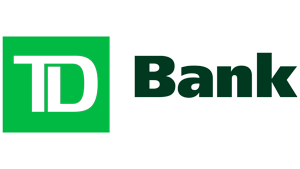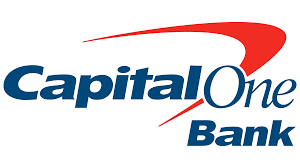As the reliance on digital documentation increases in the financial sector, so does the sophistication of fraudsters employing tactics like phishing to disguise their nefarious activities. With the rise of fraudulent banking software and techniques, it’s crucial for lenders to sharpen their skills in identifying modifying bank documents to ensure the safety and integrity of their operations.
Detecting Deception: The Art of Spotting modifying Bank Statements
Modern fraudsters are adopting increasingly sophisticated methods to create convincing forgeries. With the advent of modifying technology, which melds machine learning with artificial intelligence, modifying documents are becoming harder to spot. This technological advancement means that lenders must be vigilant and employ advanced methods to detect signs of manipulation in financial documents.
Why Do Lenders Need Bank Statements?
Understanding the use of bank statements in the lending process is vital. Most lenders require these documents to verify an applicant’s identity and financial history. Bank statements provide a wealth of information that helps lenders decide whether to approve or reject a loan application. This process is not just about verifying numbers, but about ensuring that each application is legitimate and the financial data provided is accurate.
The Motivations Behind modifying Bank Statements
Why would someone fabricate a modifying bank statement? The reasons vary, from attempting to secure loans with inflated account balances to outright identity theft. Some fraudsters use forged documents to support illegal activities, ranging from financial fraud to funding other illicit actions that could even have broader implications, such as supporting organized crime or terrorism.
Recognizing Signs of Fraud in Bank Statements
Despite the growing challenge, there are telltale signs that a bank statement may have been tampered with:
- Inconsistent Fonts and Logos: Discrepancies in font size or style and inaccurately replicated bank logos are often the first indicators of a fraudulent document.
- Quality of the Document: Changes in the resolution or quality of the print can suggest that a document has been altered. A genuine bank statement should be clear and consistent throughout.
- Unusual Transactions: Large, rounded figures or transactions that don’t fit the account holder’s typical activity can be red flags.
Anecdote: The Case of the Clever Forger
Let’s take a moment to discuss the story of John, a lender who encountered a particularly clever forgery. John noticed something off with a bank statement that seemed perfect at first glance. However, upon closer inspection, he spotted that the transaction dates did not align with typical bank processing times, which are usually non-existent on weekends and holidays. This small clue unraveled a sophisticated attempt at fraud, highlighting the importance of a keen eye in the fight against financial deceit.
How bank statement generator Can Help
At Bankstatementgenerator, we understand the challenges lenders face in today’s digital age. Our advanced detection systems use AI and machine learning not only to spot the obvious signs of forgery but also to catch the subtler cues that might go unnoticed by the human eye. Our technology ensures that you can trust the documents you review, allowing you to make informed and secure lending decisions.
For lenders looking to fortify their defenses against financial fraud, staying updated with the latest in document verification technology is key. By integrating robust verification tools and remaining vigilant about the signs of document tampering, you can protect your operations from the risks posed by modifying bank statements and other forms of financial deceit.
How Lenders Verify Bank Statements: Ensuring Accuracy in Loan Processing
In the financial world, verifying bank statements is crucial for lenders assessing loan applications. Sometimes involving up to 24 months of financial records, this process is fundamental for confirming a borrower’s financial stability and authenticity.
Efficient Verification Practices
Traditionally, the verification process involved manual checks of bank names, account numbers, and deposit histories, which could significantly slow down the underwriting process. Today, however, many savvy financial institutions have turned to automated tools. Programs like automated bank verification not only speed up the process but also enhance the accuracy of underwriting operations, ensuring that lenders can handle large volumes of applications more efficiently.
The Tell-Tale Signs of modifying Bank Statements
Spotting a modifying bank statement can often be straightforward if you know what to look for. Here are some common indicators:
- Consistency in Numbers: For example, when reviewing bank statements, lenders should compare the consistency of direct deposits with the employer details provided by applicants. Discrepancies in reported income versus bank deposits can be a red flag.
- Application Anomalies: Unusual placement of figures or icons, mismatched fonts, and inconsistent formatting are typical giveaways of document tampering.
- Suspicious Modifications: Our software has detected instances where a document contained multiple font sizes and unusual layers, which are not characteristic of genuine bank statements. One notable case involved a statement purportedly from HSBC, where the layering and font sizes used were inconsistent with the bank’s standard documents.
Real-Life Anecdote: A Close Call with a Clever Forgery
Let me share a quick story that underscores the importance of vigilance. A lender once received an application with a bank statement that at first glance seemed impeccable. However, a closer examination revealed that the transaction dates on the statement included dates that were national holidays—a time when banks do not process transactions. This small but crucial detail tipped off the lender that the document was forged, saving them from a potentially costly fraud.
Legal Implications of modifying Statements
Creating or using forged bank statements is illegal and can lead to severe penalties, including fines or imprisonment. It’s vital to understand that the use of such documents for any deceptive purpose can have serious legal repercussions. If there’s ever a need for authentic bank statements, one should always approach the bank directly to obtain verified and accurate records.
Rounded Figures: A Common Fraud Indicator
Another red flag is the presence of rounded figures in the statement. Genuine transactions rarely end in beautifully rounded numbers like $500 or $1,000. Such figures often suggest that the numbers were made up to quickly fill out a statement without real transactions backing them.
Verifying Account Authenticity
Always double-check account numbers by directly contacting the bank. Even a small discrepancy in the account number can indicate fraud. Banks are quick to spot and rectify discrepancies, helping to protect against fraudulent activities.
The Role of Technology in Fraud Detection
Advancements in technology, particularly in document verification and fraud detection software, have significantly bolstered the ability of lenders to spot modifying documents. Automated systems can now detect anomalies that human reviewers might miss, providing an essential layer of security in financial operations.
Conclusion
Lenders must remain diligent and utilize both technology and traditional verification methods to detect and prevent fraud. By staying informed about the signs of modifying documents and using the right tools, financial institutions can safeguard their operations and their customers from the risks associated with fraudulent activities. Always remember, when it comes to financial documentation, accuracy is key.
Navigating the Perils of modifying Bank Statements: Insights for Lenders and Consumers
In today’s digital age, where financial transactions are increasingly handled online, the risk of encountering modifying bank statements is rising. Whether it’s for loan applications or rental processes, the ability to spot falsified documents is crucial for protecting both financial institutions and their customers.
Understanding the Motivation Behind modifying Bank Statements
Fraudsters often employ sophisticated techniques, including software that can alter financial statements, to create these forgeries. Such activities are not only illegal but also carry hefty penalties including restitution and imprisonment. For anyone in need of a legitimate bank statement, it is advised to contact the bank directly to obtain verified information that can be used legally.
Why Would Someone Create a modifying Bank Statement?
There are myriad reasons why someone might fabricate a bank statement. Often, it’s driven by the desire to secure a financial advantage such as qualifying for a loan or renting a property. For instance, a notable case involved a loan applicant who enhanced their financial standing on paper by manipulating monthly income and expenses. This deception was uncovered when cross-verifications with the bank revealed discrepancies in reported transactions.
The Role of Banks in Preventing Fraud
Banks and financial institutions are on the frontline in the battle against fraud. They implement rigorous checks to ensure the integrity of the accounts they open and monitor. Understanding how fraudsters might circumvent these measures is key to strengthening defenses. For example, banks use advanced verification tools to cross-check the details provided by new account holders against official databases.
Legal Ramifications of Using modifying Documents
Using a modifying bank statement can lead to severe legal consequences. Beyond financial penalties, such actions can damage one’s financial and personal integrity, potentially leading to criminal records. It’s a stark reminder that honesty remains the best policy in all financial dealings.
Anecdote: A Close Call with a Clever Forgery
A lender once recounted an instance where they nearly approved a loan based on what appeared to be a solid financial statement. However, a routine check revealed that the statement’s fonts varied slightly from what the bank typically uses—a subtle clue that something was amiss. Further investigation confirmed the document was forged, illustrating the critical importance of vigilance in financial transactions.
Educating Consumers and Lenders
As we navigate this complex landscape, education is key. Lenders are encouraged to participate in continuous training on fraud detection techniques and to use the latest in verification technology. Consumers, on the other hand, should remain vigilant about protecting their financial information and report any suspicious activities related to their bank statements.







